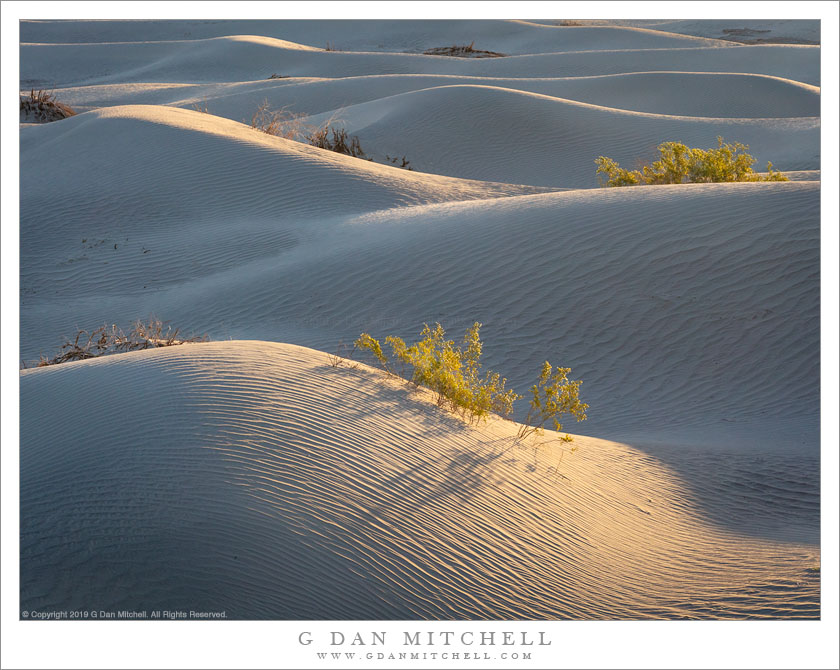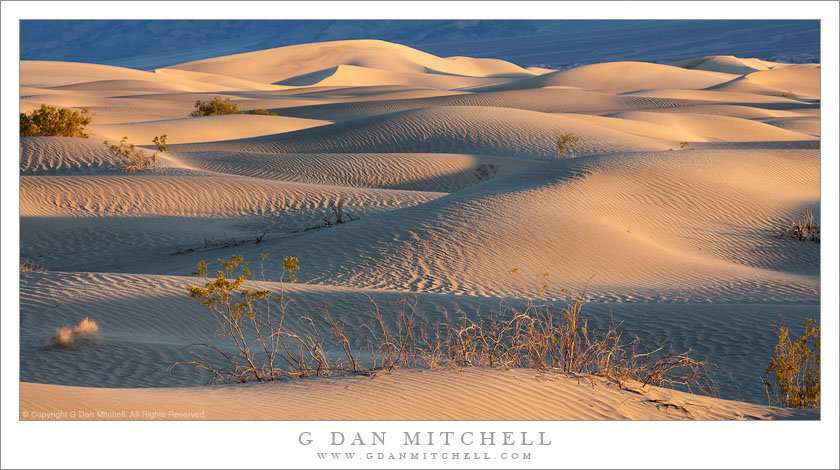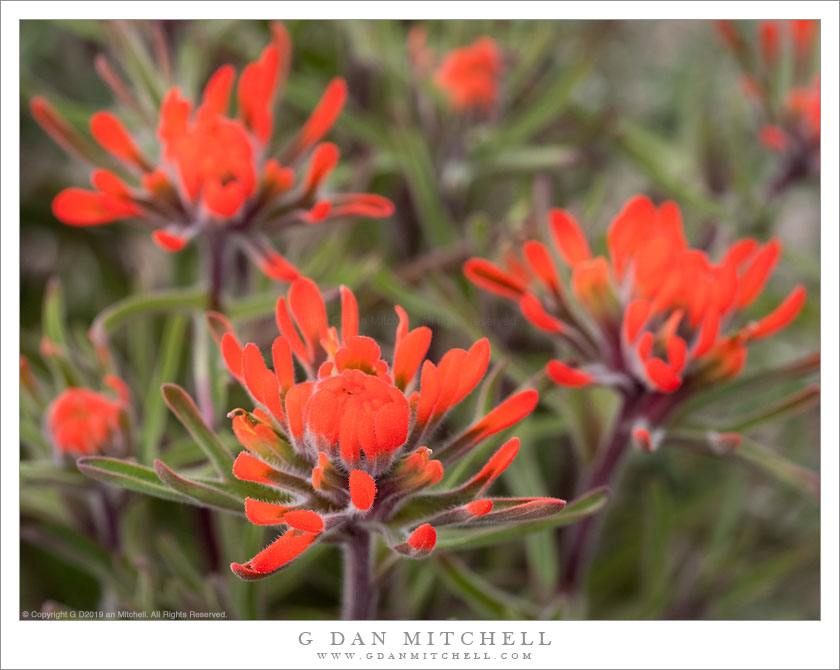
Dunes, Creosote, Sunrise Light. © Copyright 2019 G Dan Mitchell – all rights reserved.
Sunrise light shines on blossoming creosote bushes among undulating sand dunes.
Yes, this is yet another photograph of dunes in early morning light. I admit it, I cannot resist. (We probably spent more time than usual in the dunes on this trip because recent heavy rains had closed off access to a number of the non-dune locations I would have liked to visit.)
I made this photograph a few minutes later than some of the others I have shared. The strikingly warm light of dawn was already transitioning towards the more neutral daytime colors, but the sun was still low enough to send its light across the ridges of dunes and leave the valleys between them in the softer, shaded light. This small group of creosote bushes caught in the light was beginning to blossom.
G Dan Mitchell is a California photographer and visual opportunist. His book, “California’s Fall Color: A Photographer’s Guide to Autumn in the Sierra” is available from Heyday Books and Amazon.
Blog | About | Flickr | Facebook | Email
Links to Articles, Sales and Licensing, my Sierra Nevada Fall Color book, Contact Information.
All media © Copyright G Dan Mitchell and others as indicated. Any use requires advance permission from G Dan Mitchell.



